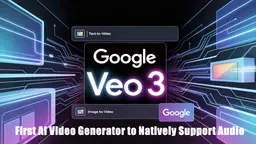Quivr Howto
Quivr is an open-source AI-powered second brain and personal assistant that allows you to store, search, and interact with your knowledge using natural language.
View MoreHow to Use Quivr
Sign up for an account: Go to chat.quivr.app and sign up for a free account. No credit card is required to get started.
Configure your second brain: Select the type of data sources you want to connect (files, applications, APIs, databases, etc.). Choose a GenAI model appropriate for your tasks. Insert prompt instructions to guide the AI responses.
Connect data sources: Use the available integrations to connect your knowledge base, such as Google Drive, Notion, GitHub, PDFs, and more. This allows Quivr to access and learn from your data.
Train the AI on your data: Let Quivr's AI process and learn from the connected data sources to build a knowledge base tailored to your information.
Start interacting: Use the chat interface to ask questions, search for information, and interact with your personalized AI assistant powered by your data.
Refine and improve: Continuously add new data sources and refine your prompts to improve the AI's performance and accuracy over time.
Quivr FAQs
Quivr is an open-source AI-powered second brain and personal productivity assistant. It allows users to store, organize, and interact with their knowledge and documents using advanced AI technologies.
Quivr Monthly Traffic Trends
Quivr received 3.4k visits last month, demonstrating a Significant Decline of -29.9%. Based on our analysis, this trend aligns with typical market dynamics in the AI tools sector.
View history traffic
Popular Articles

Best 5 NSFW Characters Generator in 2025
May 29, 2025

Google Veo 3: First AI Video Generator to Natively Support Audio
May 28, 2025

Top 5 Free AI NSFW Girlfriend Chatbots You Need to Try—AIPURE’s Real Review
May 27, 2025

SweetAI Chat vs CrushOn.AI: The Ultimate NSFW AI Girlfriend Showdown in 2025
May 27, 2025
View More







